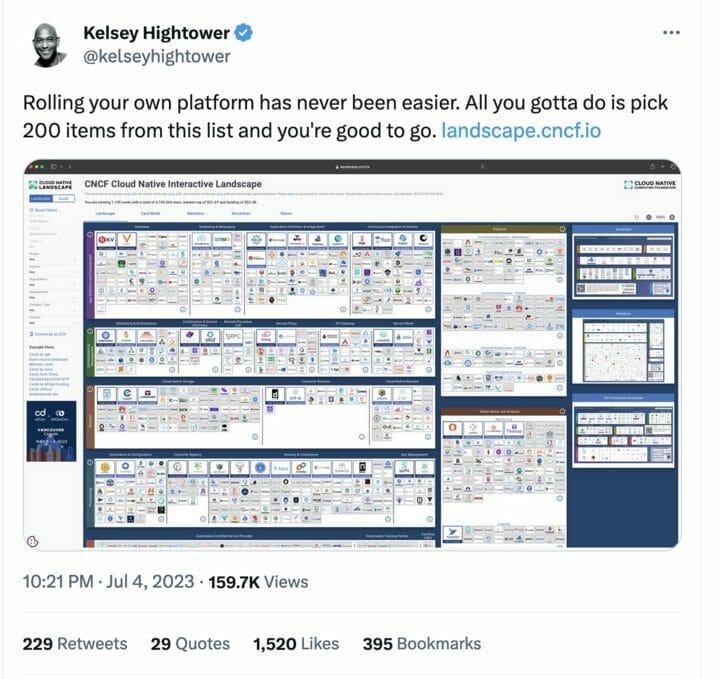5 Key Considerations Before Building an In-House Edge Orchestration Platform
In today’s fast-evolving industrial landscape, companies in manufacturing, energy, and logistics rely on edge orchestration to process real-time data at the on-premise edge. A well-designed edge computing architecture ensures scalability, security, and operational efficiency, but businesses face a critical choice: build a custom edge orchestration platform or invest in a purpose-built solution?
This “build vs. buy” dilemma is particularly complex in edge computing network architecture, where integrating edge technology architecture with existing infrastructure requires specialized expertise. While a custom-built platform may seem ideal for tailored control, it often comes with high development costs, longer deployment timelines, and ongoing maintenance challenges.
This article examines the key considerations for edge computing orchestration, including strategic fit, resource allocation, total cost of ownership (TCO), and time-to-market factors. By the end, you’ll have a clear framework to determine the best approach for your organization’s edge architecture needs.
Build or Buy? 5 Critical Factors When Making a Decision on Edge Orchestration
Building an internal edge orchestration platform might seem appealing, especially with the readily available community-driven, open-source components. As @kelseyhightower aptly (or ironically?) puts it, you can “pick your favorites from the CNCF map.” However, this approach warrants a closer examination.

1. Strategic Business Value: Aligning Edge Orchestration with Your Goals
Is developing an edge orchestrator central to your company’s value proposition, or are the applications running on the platform the true drivers of value? Building an internal platform can divert attention and resources away from your company’s core competencies. Businesses often underestimate the complexity, time, and costs of developing and maintaining a robust edge orchestration platform. The question of strategic alignment is crucial—does building an internal platform provide enough competitive advantage to justify the investment, or should those resources be focused elsewhere?
Before diving into development, ask: Is edge orchestration a core differentiator for your business, or is it merely an operational necessity?
Key considerations:
- Will an in-house edge computing orchestration platform give your business a unique competitive advantage?
- Or will it divert resources away from innovation in customer-facing applications?
- Many organizations underestimate the complexity, cost, and ongoing maintenance required for a robust edge computing architecture.
If platform development doesn’t align with your core business strategy, investing in a purpose-built solution may be a smarter move.
2. Talent and Expertise: Do You Have the Right Skillset?
Developing a successful edge orchestration platform requires deep expertise in both platform engineering and the specific demands of edge environments. Many companies have talented engineers with cloud experience, but edge computing introduces new challenges such as security without perimeter protection, scaling at the network edge, and minimizing resource footprints. Does your organization possess the necessary in-house talent, or will you need to hire new experts to manage this project? Without the right expertise, the risk of derailing at a later stage significantly increases, and operational gaps are often uncovered too late in the process.
Developing a scalable edge computing network architecture requires:
✔ Deep platform engineering expertise
✔ Security management at the network edge
✔ Resource optimization for distributed environments
Even if your team has cloud experience, edge computing introduces unique challenges:
- Security without perimeter protection
- Scalability across dispersed locations
- Limited computing resources at the edge
Example: Many companies realize too late that their cloud engineers lack specialized edge skills, leading to costly hiring delays and implementation setbacks.
3. Team Size and Scalability: Can You Dedicate Enough Resources?
Building even a minimum viable edge orchestration platform demands a substantial commitment in terms of personnel. A team of 5-10 engineers is typically required to develop and maintain the platform. For smaller companies, for example, early startups, with 10-20 developers, the platform development and maintenance efforts typically require a handful of developers. This diverts resources away from core product development and innovation. Organizations must carefully consider whether they can afford to allocate such significant engineering capacity to a platform build-out, particularly if those resources could be used for customer-facing solutions.
A minimum viable edge orchestration platform typically requires:
- 5-10 full-time engineers for development & maintenance.
- For startups: If you have only 10-20 engineers total, allocating even a handful to platform development may hinder product innovation.
Key question: Can your team afford to divert resources from core product development, or is a commercial solution more viable?
4. Time to Value: How Fast Can You Deploy and Benefit?
Time is often more critical than development cost in today’s fast-paced industrial environments. How quickly can an internal platform be developed and scaled to meet business requirements? Delays in platform development can slow down go-to-market strategies and impact overall business growth. Many companies find that the time needed to build an in-house platform exceeds initial projections, leading to missed opportunities. In a competitive marketplace, being late to market can severely impact long-term success.
In fast-paced industrial environments, time is often more critical than cost.
Challenges of in-house development:
- Longer deployment timelines → Delays in go-to-market strategies
- Unforeseen technical hurdles → Slower scalability
- Missed business opportunities → Competitors gain an edge
Reality check: Many companies find that actual development timelines far exceed initial projections, leading to costly setbacks.
5. Total Cost of Ownership (TCO): Beyond the Initial Investment
The initial cost of developing an internal platform is just the tip of the iceberg. Companies must also factor in the long-term operational and maintenance costs associated with running the platform, including infrastructure, staffing, and future upgrades. Opportunity costs also need to be considered—by focusing on platform development, what other opportunities might be missed? Furthermore, unforeseen challenges and ongoing operational requirements can further inflate the total cost of ownership. A thorough and honest assessment of the TCO is necessary before embarking on a platform-building project.
TCO goes beyond development costs—consider:
✔ Infrastructure – On-premise hardware & cloud costs.
✔ Ongoing staffing – Engineers dedicated to maintenance.
✔ Security & compliance updates – Continuous improvements needed.
✔ Opportunity costs – What innovations are you missing by focusing on infrastructure?
Takeaway: Unforeseen maintenance, scaling needs, and operational complexities can make TCO significantly higher than anticipated.
Why Buying a Purpose-Built Edge Orchestration Platform Might Be Smarter
Many advantages of buying a pre-built edge orchestration platform stem from mitigating the risks and challenges outlined above. By opting for a purpose-built solution, companies can take advantage of the following benefits:
- Faster Time to Market: Off-the-shelf edge platforms provide automated lifecycle management, enabling companies to deploy quickly and start realizing value from day one.
- Enhanced Developer Agility: Purpose-built platforms allow developers to focus on business-critical tasks, such as building applications and improving customer experiences, rather than dealing with platform maintenance and operational overhead.
- Ongoing Support and Updates: Service Level Agreements (SLAs) ensure prompt issue resolution, regular security updates, and new feature rollouts, allowing businesses to operate efficiently without worrying about platform reliability.
- Continuous Improvement: A commercial platform evolves based on customer feedback, providing businesses with ongoing improvements, new capabilities, and a stable infrastructure upon which to build.
- Reduced Risk: By opting for a solution backed by a vendor, companies reduce the risk associated with internal personnel turnover, knowledge loss, or the project stalling due to internal resource constraints. External vendors typically have specialized knowledge and experience in edge environments, further minimizing the risk of failure.
- Guaranteeing growth: As your installed base, edge nodes, and application numbers expand, the platform must scale accordingly. In-house platforms are often not designed or tested with full-scale rollouts in mind, which can limit growth potential.

Build vs. Buy: Key Takeaways for Edge Orchestration Success
Deciding whether to build or buy an edge orchestration platform is a complex decision that depends on a company’s specific needs, resources, and long-term goals. Building an internal platform may offer greater customization but comes with significant risks related to time, talent, and cost. On the other hand, buying a commercial solution allows companies to quickly scale, reduce operational risks, and focus on delivering value through their core competencies. By carefully assessing the strategic value, resource demands, and total cost of ownership, businesses can make an informed decision that positions them for success in the industrial edge environment.
1. Key Decision Factors: Build vs. Buy
Deciding whether to build an in-house edge orchestration platform or adopt an existing solution requires a careful balance of priorities. A custom-built platform offers the flexibility to tailor every detail to your exact needs—but at the cost of significant development time and resources. On the other hand, a pre-built solution accelerates deployment, allowing teams to focus on operational outcomes rather than software development.
Beyond speed, consider the long-term responsibility of maintaining and securing an in-house platform. Managing updates, scaling infrastructure, and ensuring compliance can quickly turn into a full-time commitment. Finally, cost is more than just the initial investment. While building in-house may appear cost-effective upfront, the long-term total cost of ownership (TCO)—including development, maintenance, and future upgrades—can often exceed that of a well-supported commercial solution.
In summary:
- Customization vs. Speed – Do you need a highly tailored solution, or is fast deployment more important?
- Control vs. Maintenance – Are you prepared for ongoing updates, security patches, and infrastructure scaling?
- Long-Term Cost vs. Upfront Savings – Building may seem cost-effective initially, but TCO (Total Cost of Ownership) can escalate.
2. When to Choose Building an In-House Platform
- Your business has deep expertise in edge computing architecture
- You require highly specific functionality that commercial solutions lack
- You have the resources and team size to support ongoing development and maintenance
Building an edge orchestration platform from scratch can be a strategic choice for organizations with deep expertise in edge computing architecture and the ability to invest in long-term development. If your operational needs demand highly specialized functionality that off-the-shelf solutions can’t provide, an in-house approach may be the best fit. However, success hinges on having the right resources—not just for initial development but for the ongoing maintenance, security updates, and scalability required to keep the platform reliable over time.
3. When Buying a Purpose-Built Solution Makes More Sense
- You need a scalable, proven edge orchestration solution
- You want to reduce time-to-market and operational complexity
- Your focus is on business growth and application innovation, not infrastructure management
For most organizations, adopting a proven edge orchestration platform offers a faster path to value. A commercial solution eliminates the complexity of building from scratch, allowing teams to deploy at scale while focusing on core business priorities. Instead of allocating resources to infrastructure management, companies can accelerate time-to-market and drive innovation where it matters most—delivering reliable, high-performance applications at the edge.
How to Choose the Right Edge Orchestration Solution
When picking an edge orchestration platform there are a number of knock-out questions you should ask yourself, or a considered vendor:
- Scale: Can the solution scale with the number of edge sites you require?
- Offline features: Can the edge provide application availability in case of network outages and host failures?
- Footprint and complexity at the edge: How much resources do the edge software stack require? How much operational tasks are automated along the lifecycle: Design, deploy, update, monitor, trouble-shoot and fix.
- Local services: Does it provide all the necessary services required to run at the edge such as distributed secrets, distributed image repositories?
- Networking requirements: Will the solution work well with your network design; firewalls, network segments etc.
- Openness and standard-based: Can you use any OCI container or do you need to use the vendor tooling? Can it run on any Linux?
Get started
Book a demo to learn more
Schedule a demo of the Avassa Edge Platform today to learn more.

